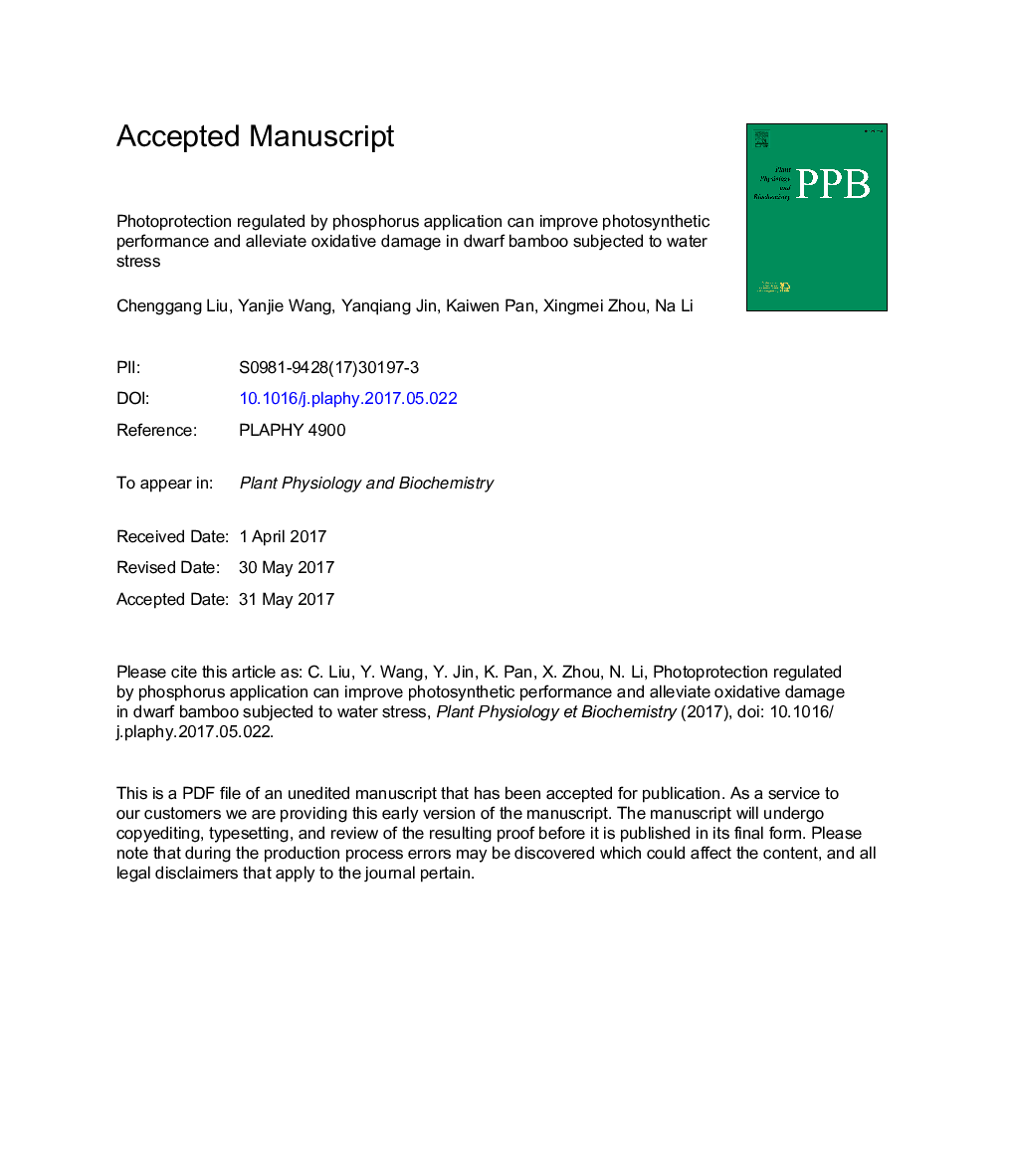| Article ID | Journal | Published Year | Pages | File Type |
|---|---|---|---|---|
| 5515425 | Plant Physiology and Biochemistry | 2017 | 34 Pages |
Abstract
Water and nutrients, particularly phosphorus (P), are the two most limiting factors for dwarf bamboo growth in tropical and subtropical areas. Dwarf bamboo is highly sensitive to water stress and often causes severe P deficiency in its growing soils due to the characteristics of shallower roots and expeditious growth. However, little is known about its photoprotective response to soil water deficit and the underlying mechanisms regulated by P application. In this study, a completely randomized design with two factors of two water regimes (well-watered and water-stressed) and two P levels (with and without P application) was arranged to investigate this issue in dwarf bamboo (Fargesia rufa) plants. Water stress not only decreased water status and photochemical activity but also increased lipid peroxidation due to reactive oxygen species (ROS) accumulation irrespective of P application. In this case, thermal dissipation and antioxidative defense were promoted. Moreover, the role of the waterâwater cycle under this stress still could not be ignored because it accounted for a large proportion of total energy (JPSII). P application significantly enhanced photochemical activity accompanied by increased chlorophyll content in water-stressed plants. Meanwhile, P application remarkably reduced thermal dissipation and hardly affected photorespiration and the waterâwater cycle under water stress. Although P application only enhanced ascorbate (AsA) level, ROS, particularly hydrogen peroxide (H2O2), and lipid peroxidation were significantly reduced in water-stressed plants. Therefore, P application can improve the photosynthetic capacity by regulating the redistribution of energy absorbed by PSII antennae and independently activating of the H2O2-scavenging function of AsA to alleviate oxidative damage in F. rufa plants, thereby improving their survival under water stress conditions.
Keywords
NPQdehydroascorbate reductaseMDHARoxidized ascorbateΦPSIIDEPsmonodehydroascorbate reductaseLRWCtAsAGSSGCO2 assimilation ratetGSHMDAtotal ascorbatemaximum quantum efficiency of PSIIO2•–quantum yield of PSII electron transportDHARGSHAPXASAFv/FmROSHydrogen peroxidereduced ascorbateAscorbatesuperoxide anionPhosphorus additionThermal dissipationOxidative stressDHASODSuperoxide dismutaseintercellular CO2 concentrationmalondialdehydeLeaf relative water contentStomatal conductanceH2O2VAZascorbate peroxidaseXanthophyll cyclereduced glutathioneoxidized glutathioneglutathione reductasetotal glutathioneReactive oxygen species
Related Topics
Life Sciences
Agricultural and Biological Sciences
Plant Science
Authors
Chenggang Liu, Yanjie Wang, Yanqiang Jin, Kaiwen Pan, Xingmei Zhou, Na Li,
